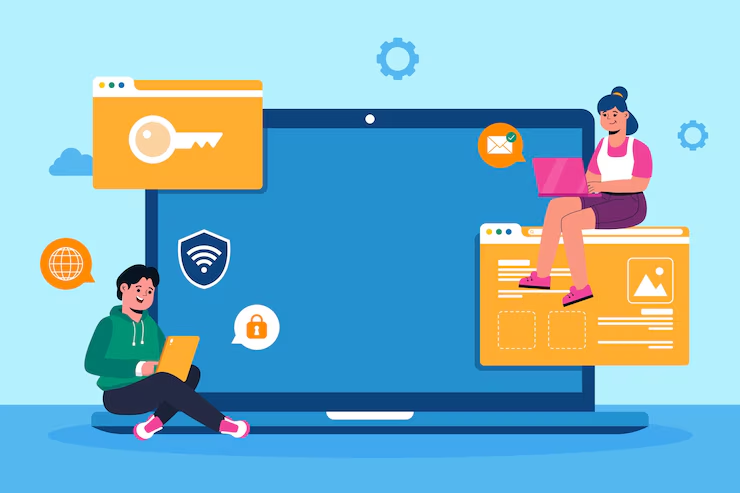In the digital age smartphones hold more personal information than ever before. Ways to Protect Your Personal Data on Android and iPhone. From contacts and photos to banking details and private messages your phone is a treasure trove of data that requires protection. Both Android and iPhone users face risks from hackers malware and privacy leaks.
Fortunately protecting your personal data doesnt have to be difficult. Protecting your personal data on your smartphone is crucial in todays connected world. By following these top 7 strategies using strong authentication keeping software updated managing app permissions using encrypted messaging avoiding public Wi Fi risks enabling device tracking and staying alert to phishing you can significantly improve your smartphone security.
This article covers the top 7 practical and effective ways to safeguard your personal data on both Android and iPhone devices helping you stay safe and secure in 2025.
Protecting Your Personal Data Matters
Personal data includes anything that can identify you such as your name phone number email location passwords financial information and more. If this data falls into the wrong hands it can lead to identity theft financial fraud privacy invasions or even blackmail.
With cyberattacks and data breaches increasing its essential to take proactive steps to protect your data. Smartphones being portable and always connected are especially vulnerable.
Use Strong Authentication Methods

Securing access to your phone is the first step in protecting your data.
- Use strong passcodes Avoid simple PINs like 1234. Use longer PINs alphanumeric passwords or complex patterns.
- Enable biometric security Both Android and iPhones support fingerprint scanners and facial recognition. These provide fast, secure access.
- Enable two factor authentication (2FA) Use 2FA for your important apps and accounts to add an extra security layer. It requires a second verification step besides the password.
Keep Your Operating System and Apps Updated
Regular updates fix security vulnerabilities that hackers exploit.
- Enable automatic updates Most smartphones allow you to automatically update the OS and apps.
- Install updates promptly If you receive a notification for an update install it as soon as possible.
- Download apps only from official stores Use Google Play Store for Android and the App Store for iPhone. Avoid third party app stores that can host malicious apps.
Manage App Permissions Carefully
Apps often request access to your contacts camera microphone location and other sensitive data. Granting unnecessary permissions puts your privacy at risk.
- Review permissions regularly Go through app permissions in your phone settings.
- Disable permissions that arent needed For example a flashlight app doesn’t need access to your contacts or location.
- On Android Settings Apps & notifications Permissions
- On iPhone Settings Privacy
Use Encrypted Communication Apps
To keep your messages and calls private use apps that support end-to-end encryption.
- Signal Open-source and highly secure.
- WhatsApp Widely used with end to end encryption by default.
- Telegram Offers secret chats with encryption.
These apps ensure only you and the recipient can read or hear your conversations.
Avoid Public Wi Fi or Use VPNs

Public Wi-Fi networks are convenient but often insecure.
- Avoid sensitive activities Dont check your bank accounts or enter passwords on public Wi-Fi.
- Use a VPN A Virtual Private Network encrypts your internet connection making it difficult for hackers to intercept your data.
- Turn off Wi Fi auto-connect Prevent your phone from automatically joining unknown networks.
Enable Find My Device and Remote Wiping Features
Losing your phone can expose your data to thieves.
- Enable Find My Device (Android) or Find My (iPhone) These allow you to locate lock or erase your phone remotely.
- Set up remote wipe If your phone is stolen wipe your data to prevent unauthorized access.
- Regularly back up your data Ensure backups are secure and up to date.
Be Wary of Phishing Attempts and Suspicious Links
Phishing scams trick you into giving away your personal information.
- Dont click on suspicious links Verify links before clicking especially in emails or texts from unknown sources.
- Avoid downloading attachments from untrusted contacts.
- Verify requests for personal info Legitimate companies wont ask for sensitive information via email or SMS.
Bonus Tips for Both Android and iPhone Users
- Disable Bluetooth and location services when not in use Prevent unauthorized tracking and connections.
- Use a password manager Create and store strong unique passwords.
- Regularly clear your browsing data and cookies This helps maintain privacy online.
- Avoid jailbreaking or rooting your device These actions weaken built-in security protections.
Conclusion
Protecting your personal data on your smartphone is crucial in todays connected world. By following these top 7 strategies using strong authentication keeping software updated managing app permissions using encrypted messaging avoiding public Wi Fi risks enabling device tracking and staying alert to phishing you can significantly improve your smartphone security.
Start implementing these tips today to keep your personal information safe from threats and enjoy peace of mind.In the digital age smartphones hold more personal information than ever before. From contacts and photos to banking details and private messages your phone is a treasure trove of data that requires protection. Both Android and iPhone users face risks from hackers malware and privacy leaks.
Fortunately protecting your personal data doesnt have to be difficult. Protecting your personal data on your smartphone is crucial in todays connected world. By following these top 7 strategies using strong authentication keeping software updated managing app permissions using encrypted messaging avoiding public Wi Fi risks enabling device tracking and staying alert to phishing you can significantly improve your smartphone security.



